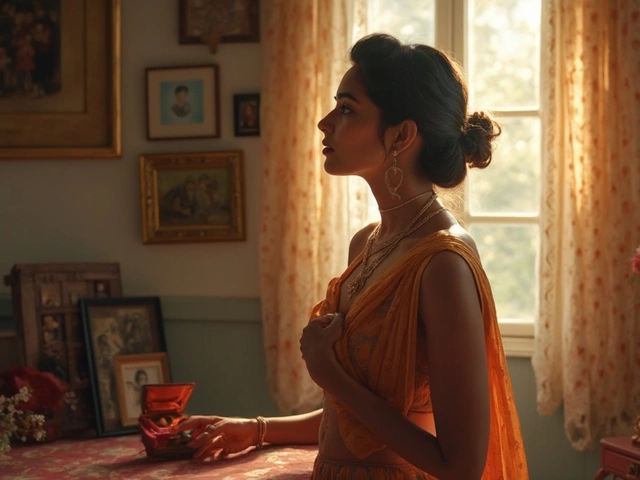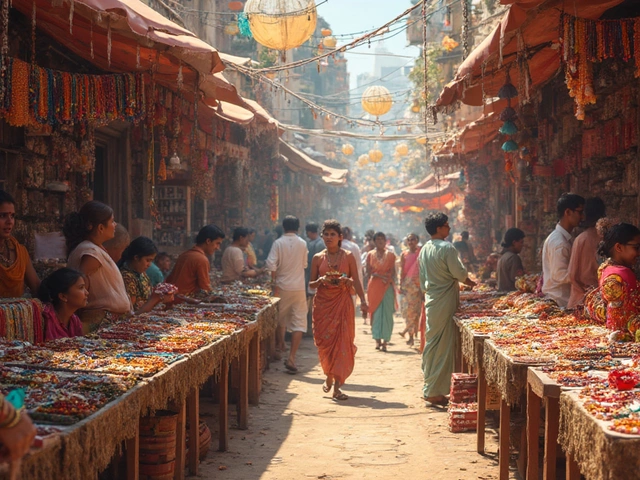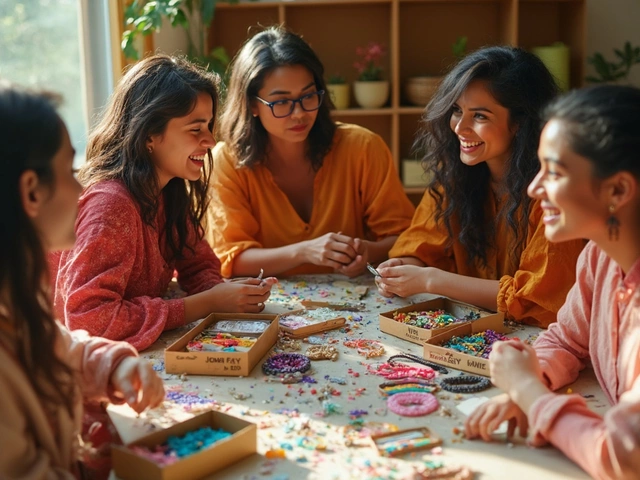
Bangles are more than just decorative ornaments in Indian culture. They are imbued with deep symbolism and are a staple in a woman's jewelry collection. Traditionally, they are associated with marriage and are worn in a multitude of vibrant colors, each often representing different emotions and stages of life.
When bangles break, intentionally or unintentionally, it can have different connotations based on the local customs and beliefs. For some, they signify a change or an omen, while for others, they may simply represent a path to moving on from past experiences. The breaking of bangles is a crossroad between superstition, cultural belief, and personal emotion. This article explores how breaking bangles can mean more than a simple accident, diving deep into both historical contexts and modern-day interpretations.
- Historical Significance of Bangles
- The Role of Bangles in Indian Marriage
- Cultural Interpretations of Broken Bangles
- Emotional and Social Impacts
- Modern Reinterpretations and Trends
- Practical Tips for Handling Broken Bangles
Historical Significance of Bangles
The history of bangles in India stretches back thousands of years, with evidence suggesting their existence since the Indus Valley Civilization around 2600 BCE. Archaeologists have unearthed terracotta bangle fragments and depictions on figurines that signify their significance in ancient society. These ancient accessories were not merely ornamental but held societal and ceremonial importance. Bangles in ancient times were often crafted from materials like shell, copper, bronze, and even glass. They were adorned by not just women from different strata of the society but also by men, highlighting a complex tapestry of cultural symbolism that they carried.
In historical texts and Vedic scripts, bangles were depicted as an integral element of feminine beauty and grace. The variety of materials used in creating these bangles was vast, corresponding to the societal status and wealth of the individual. Royalty would often wear gold and silver bangles encrusted with precious stones, while the common populace might wear simpler ones. Regional variations also abounded, with each locale employing its distinctive crafting techniques and designs, thus echoing the diversity of the Indian cultural landscape. This tradition of wearing bangles has been depicted in numerous historical and religious artworks, which stand testament to their pervasive appeal across ages.
Scholars have noted that bangles were not only markers of identity but also carried spiritual weight. Worn during important rituals and life events, such as childbirth and marriage, they were believed to bring protection and prosperity to the household. In many cultures, specific colors and styles were worn to convey messages or reflect a woman's marital status. The historical affinity for bangles is also echoed in their portrayal in literature and folklore, where they are often imbued with meanings of love, fidelity, and resilience. One notable reference is found in the classical Tamil literature Silappatikaram, an epic that revolves around the story of a pair of anklets, a close relative of the bangle in cultural lore.
The ancient proverb, "A woman's arm is unadorned, lifeless without bangles," captures the essence of their significance, highlighting not just the aesthetic but the emotional connection to these ancient accessories.
India's rich history with bangles is also reflected in the archaeological artifacts found across various regions. In Rajasthan, for example, lac bangles, which are wonderfully colorful and intricate, have been crafted in the same way for centuries, signifying the deep-rooted tradition in that region. Studies have shown how different dynasties and periods influenced the art and craft of bangling. The Mughal era, noted for its decadence and opulence, saw bangles take on even more elaborate designs, with exquisite enameling and embedding of gems. These intricate designs had a definitive role in drawing admiration from across various cultures, leading to a cross-pollination of jewelry crafting techniques across the globe.
As time progressed, the significance of bangles continued to evolve. They maintained their place in the cultural fabric of the Indian subcontinent, adapting through the ages, yet always retaining an aura of timelessness and tradition. Such historical continuity encapsulates not just the aesthetic appeal of bangles but marks them as enduring symbols of identity and cultural heritage. This enduring legacy is evident even today in the vibrancy of modern Indian festivities, where bangles continue to hold pride of place in traditional celebrations.
The Role of Bangles in Indian Marriage
In the tapestry of Indian culture, bangles symbolize numerous things, but their role in marriage stands paramount. Traditionally, these vibrant circles do much more than clink together on a bride’s wrist; they symbolize love, prosperity, and signify the health and prosperity of one's husband. They are an outward display of happiness and commitment, and many deeply believe they hold protective qualities. Various regional customs dictate the specific types of bangles worn, their colors, and materials, each steeped in unique traditions and meanings.
The journey of bangles in Indian marriages begins with the ceremony itself. In certain communities, the bride is adorned with green, red, or gold bangles, colors considered to bring good luck and happiness. For instance, in Punjabi weddings, the ancestral tradition of 'Chooda' requires the bride to wear a set of red and cream ivory bangles, which sparkles with the joy of new beginnings. These bangles are typically presented by the bride’s maternal uncle and aunt in an emotional ritual that bonds family and tradition deeply.
Emma Tarlo, author of "Unsettling Memories," remarked, "The bangles of a married woman in India form an important part of her identity and social status."
The symbolism goes beyond just marriage. In different parts of India, the breaking of these bangles signifies both transition and continuity as life unfolds. It's fascinating how something so delicate can carry such strong cultural weight.
Across regions, variations exist, like in the southern state of Tamil Nadu, where a bride’s wrists are adorned with beautifully crafted gold and glass bangles, often complementing the vibrant hues of her bridal saree. These bangles showcase the finesse of craftsmanship unique to the region, intricately designed to capture the loved ones’ blessings and wishes bestowed upon her. The act of placing bangles onto a bride’s wrists is a moment brimming with blessings, hopes, and silent prayers for her future.
The ceremonies themselves often incorporate bangle customs. In some cultures, there’s a poignant moment known as the 'bangle ceremony', where family members bestow a bride with a collection of bangles, a ritual that binds the family together in shared tradition. As she wears them, they become symbols of her familial ties and the protective circle of love that surrounds her new married life. Purple bangles might mean royalty and power, whereas yellow ones could symbolize prosperity and new beginnings, pivotal in ensuring a blissful married life. Such variations showcase the spectrum of sentiments that bangles embody across the ethnicity.
Moreover, their roles extend beyond symbolic representation. These bangles serve as cherished memories of the big day itself, becoming heirlooms passed down through generations, fostering a continuity of familial bonds and shared histories. For many, the tinkling sound is a daily reminder of that profound commitment made on the day of marriage, echoing through daily life in mundane chores or special gatherings.
The Modern Interpretation
Interestingly, contemporary brides have started incorporating modern trends with traditional bangle customs, often customizing them with personalized inscriptions or opting for unique designs that reflect individual personalities. Such fusion signifies how traditional roles evolve, embracing change while honoring the past.
| Traditional Color | Meaning |
|---|---|
| Red | Passion and Prosperity |
| Green | Luck and Fertility |
| Gold | Wealth and Prosperity |
Through the journey of marriage, from the wedding day to daily wear, the bangles play an instrumental role in representing and shaping the lives of Indian women, encapsulating both the thunderous joy of celebrations and the quiet strength of everyday life. Whether traditional or modern, these circular ornaments resonate through time, a testament to the eternal cycle of love and life.
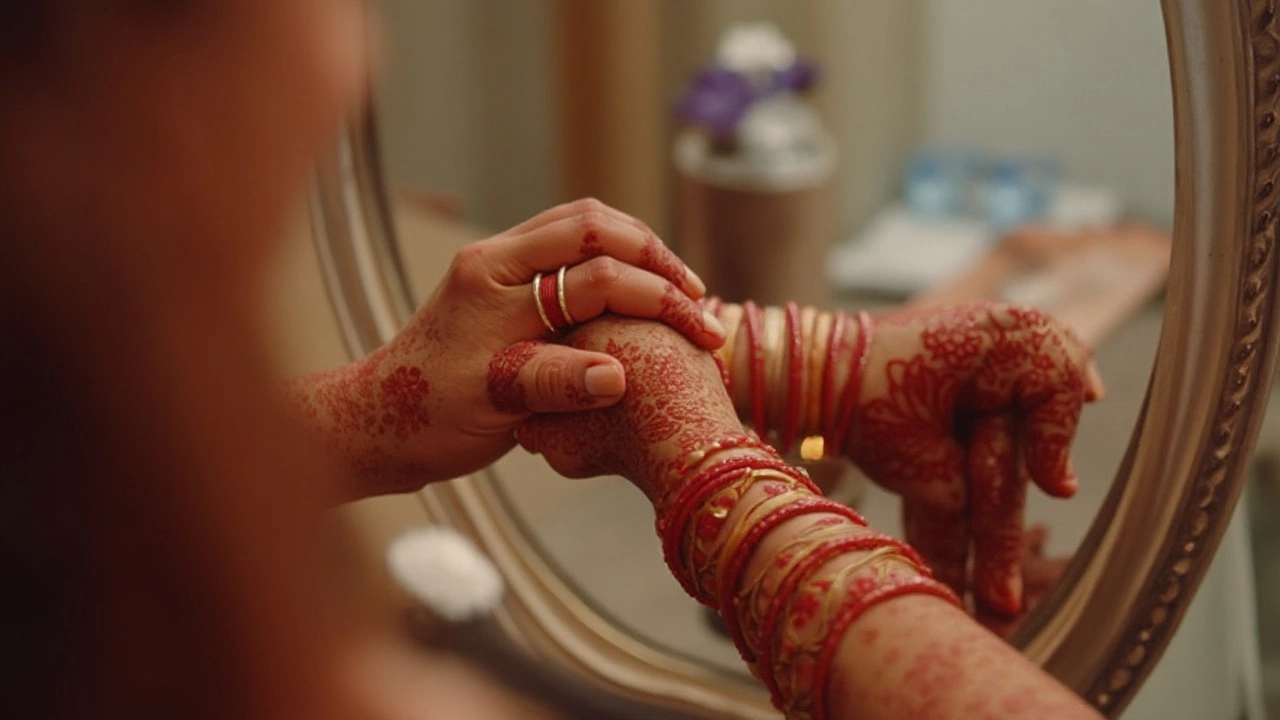
Cultural Interpretations of Broken Bangles
The sound of a bangle breaking can be startling, and in India, it evokes a complexity of meanings steeped in both tradition and belief. Within many communities, bangles are a powerful symbol of a woman's marital status and her well-being. They are typically gifted to brides, a reflection of love, commitment, and a blessing for a prosperous married life. However, when these delicate circles shatter, the implications can be multifaceted.
In some parts of India, broken bangles are closely linked with bad omens. The unexpected snap of a bangle might be seen as a sign of impending trouble or misfortune. This belief, which has been passed down through generations, suggests that breaking a bangle signifies a disruption in harmony or balance. Among certain communities, particularly in rural areas, women may refrain from wearing broken bangles until a religious ritual has been performed to ward off any bad luck. Conversely, in more urban and contemporary settings, people might be less inclined to subscribe to these interpretations, focusing instead on the aesthetics and practicality of replacing a broken bangle.
In some cultural contexts, the act of breaking bangles is transformative. It is said to mark a new beginning rather than an end, symbolizing the shedding of the old and welcoming the new. Particularly among widowed women, breaking bangles has historically been part of a ritual marking the end of marital life. This practice, albeit declining, once required a woman to symbolically break her bangles during mourning. Today, some modern interpretations have shifted to embrace this act as a celebration of independence and personal growth, though this varies widely across regions.
Different myths and interpretations underpin these beliefs. Literature and folklore are rich with narratives that explore the symbolic meanings of broken bangles, highlighting stories where characters navigate love, loss, and renewal through this emblematic act. Similar to the diverse cultural tapestry of India itself, the interpretations of broken bangles are deeply personal, potentially varying from household to household. A shared story from the ancient texts might recount an instance where a goddess or queen broke her bangles in times of sacrifice or courage, thereby empowering women to attribute a heroic meaning to this event.
"In witnessing broken bangles, one does not solely see shreds of glass, but the tapestry of stories that hold them together," writes author and cultural historian Anita Nair, illustrating the emotional weight and varied meanings behind this seemingly small occurrence.
The diversity of belief systems and interpretations across India is part of what makes understanding broken bangles so intriguing. From heralding a new chapter to representing an omen, the profound cultural variations offer a glimpse into the rich and intricate traditions that wearers carry with them. Regardless of how one might choose to interpret the breaking of bangles, they remain a poignant reminder of cultural identity, personal journeys, and the dynamic blend of old traditions and new expressions in modern society.
Emotional and Social Impacts
The act of breaking bangles carries with it a multitude of emotional and social implications, often intertwined with personal experiences and cultural narratives. For many Indian women, the colorful circles that adorn their wrists are not just jewelry, but reminders of their journey, their roles, and their identities within their families and social circles. When bangles break, intentionally or by accident, it can stir a complex web of feelings ranging from loss to liberation. On an emotional level, broken bangles can evoke a sense of sadness or foreboding, especially when they are associated with significant life events. For newlyweds, breaking the glass bangles given during the wedding ceremony might be seen as a bad omen, a potential reflection of discord or forthcoming challenges in their new life together. This symbolic weight can bear heavily on those who put faith in omens and traditions.
Socially, the breaking of bangles can alter perceptions and affect relationships. In some Indian communities, a woman seen wearing broken bangles may face subtle shifts in how she is treated. She might encounter inquiries into her marital status or face whispers about her home life. The implication is that a woman with unbroken bangles carries with her an emblem of prosperity and happiness, while broken ones could, inadvertently or not, signify trouble. These perspectives, although gradually changing in modern times, still echo the principles of older traditions which held that a woman's adornment was directly linked to her family's well-being. One should not forget, though, that across different regions of India, the symbolism of broken bangles can vary widely. In certain areas, for instance, the deliberate shattering of bangles can signify a widow's acceptance of her new phase of life, marking a somber reality with a powerful act of acknowledgment.
"Bangles, with their colors and clinking, are almost conversations within themselves," notes Anita Desai, a respected Indian author. "Their breakage can speak louder than words, especially when it signifies transitions both personal and social."
In the modern age, social media and an ever-broadening global conversation are slowly altering the traditional perceptions of broken bangles. Young women today might view them as a chance to embrace change, to redefine themselves, or to simply move on from past chapters. As society grows more accepting of changing and personal interpretations of age-old traditions, the emotional response to such incidents can also become more diverse and personalized. Far from being just a cultural dilemma, the way broken bangles are perceived reflects the dynamic process of societal evolution—where old meets new and tradition is constantly redefined by the individuals who carry it forward.
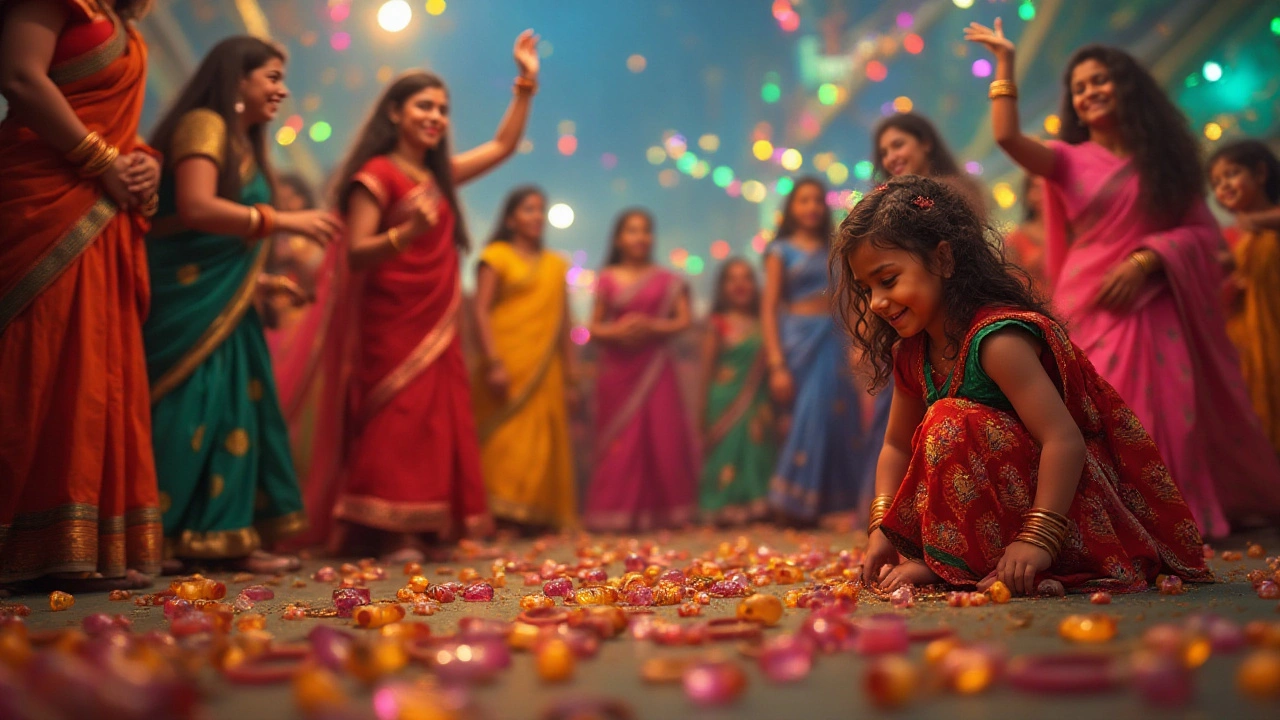
Modern Reinterpretations and Trends
In recent years, the traditional and cultural associations of bangles have seen fresh interpretations as fashion and cultural identities evolve. Wearing these vibrant ornaments is not just limited to conventional roles but has become a fashion statement, crossing cultural and geographical boundaries. In a time where globalization prevails, influencers and designers alike draw inspiration from Indian culture, giving bangles a modern twist without losing the essence of their origins. The acceptance of bangles among diverse communities is a testament to their universal charm and significance.
Social media platforms have played a pivotal role in the resurgence of bangles as a trend. Thousands of people share their personal styles, combining traditional Indian culture elements with contemporary apparel. This blend creates a fascinating juxtaposition of the old with the new, showing how enduring cultural symbols can find a place in a multi-faceted world of fashion. For instance, modern bridal trends seamlessly incorporate these traditional ornaments, but in colors and materials that reflect today’s tastes. Bangles fashioned from materials like recycled glass or sustainable metals have surged in popularity, as environmentally conscious consumers seek to blend style with sustainability.
According to fashion expert, Anjali Menon, “Bangles are no longer just about tradition; they represent an assertion of identity for many young women today who want to honor their heritage while stepping into a modern world.”
The reinterpretation of broken bangles has also gained cultural traction. Instead of seeing them as a negative omen, artists and creatives now recycle these pieces into unique art, jewelry, and home decor, giving them a new life and meaning. Workshops teaching the upcycling of broken bangles into vibrant mosaics or jewelry are increasingly popular, encouraging the practice of sustainability within art. Not only does this foster a sense of creativity, but it also preserves the cultural essence of bangles.
This modern take is reflected in the ever-growing demand for custom-made bangles that can be personalized to fit individual tastes or carry personal anecdotes. Rachel Krish, a renown designer based in New York, often engages with traditional artisans in India to create bespoke bangles that narrate stories of love and heritage for her clients. By preserving traditional crafting techniques while adding contemporary designs, the cultural narrative of bangles continues to evolve, staying relevant amidst a fast-paced environment. Such efforts highlight a shift in focus from solely aesthetic values to a blend of symbolism and personal significance.
Overall, the current trends reflect a deepened appreciation for cultural artifacts like bangles. As they continue to inspire and adapt, their journey from traditional adornments to icons of cultural fusion signifies a beautiful transformation. It’s clear that while times have changed, the allure and significance of bangles endure, demonstrating their power to connect generations, cultures, and communities in unprecedented ways.
Practical Tips for Handling Broken Bangles
A broken bangle carries more than just monetary value, especially when woven into the tapestry of cultural and emotional narratives. While dealing with broken bangles might seem straightforward, managing them properly can preserve their symbolic significance and memories associated with them. Let's delve into the best ways to handle these delicate situations, ensuring you're left with a sense of peace rather than frustration.
First, safety should be your top priority. Broken pieces of bangles can be sharp and dangerous if not handled carefully. Use a pair of sturdy gloves while picking up shattered fragments to avoid cuts. As you carefully collect all the broken pieces, consider wrapping them in a soft cloth or placing them in a box to prevent further breakage or injury. Some people even choose to discard the cloth-wrapped bangles into a natural setting like a river, aligning with local customs that believe in returning broken glass to nature.
If the bangle holds emotional or cultural significance, think about ways to reuse or recycle it creatively. Many artisans and jewelry makers are open to the idea of transforming these fragments into new pieces, such as pendants or mosaic art. This approach not only breathes new life into your cherished possession but also retains some of its original stories and symbols. The concept of upcycling broken bangles into new forms of art is gaining popularity and allows individuals to keep their heritage while embracing sustainable practices.
When examining your bangles, consider categorizing them according to their colors or themes before deciding their fate. Broken bangles can also be repurposed into practical household items, like photo frames or ornament holders, adding a traditional touch to your home decor. It becomes a beautiful way to preserve the essence of your heritage without merely discarding the broken pieces.
For those who are spiritually inclined, dealing with broken bangles might include a ritual of goodbye, acknowledging the memories it symbolized. Gather family or friends to share stories or memories tied to the bangle. As you transition from one phase of your life to another, identifying moments when you first acquired them can offer closure. This collective introspection can be therapeutic and serves as a reminder of the continuity between past and present.
Avoiding breakage in the future is about mindful storage and use. Keep your bangles in separate compartments to minimize friction and pressure, which often leads to cracks and breaks. Also, be cautious when putting them on or removing them; using a lubricant like lotion can help glide the bangles past the knuckles smoothly, decreasing the chance of accidental breakage.
Broken bangles might embody both a material and spiritual crisis, yet with careful handling, they can continue to be a part of one’s journey—a tangible link to tradition. As you nurture your treasures in new forms, remember that they carry with them echoes of cultural richness and personal stories that make them invaluable. As Mahatma Gandhi once said, "Our ability to reach unity in diversity will be the beauty and the test of our civilization." This reflects the harmonious blend of traditional values and modern practices that handling broken bangles thoughtfully embodies.
